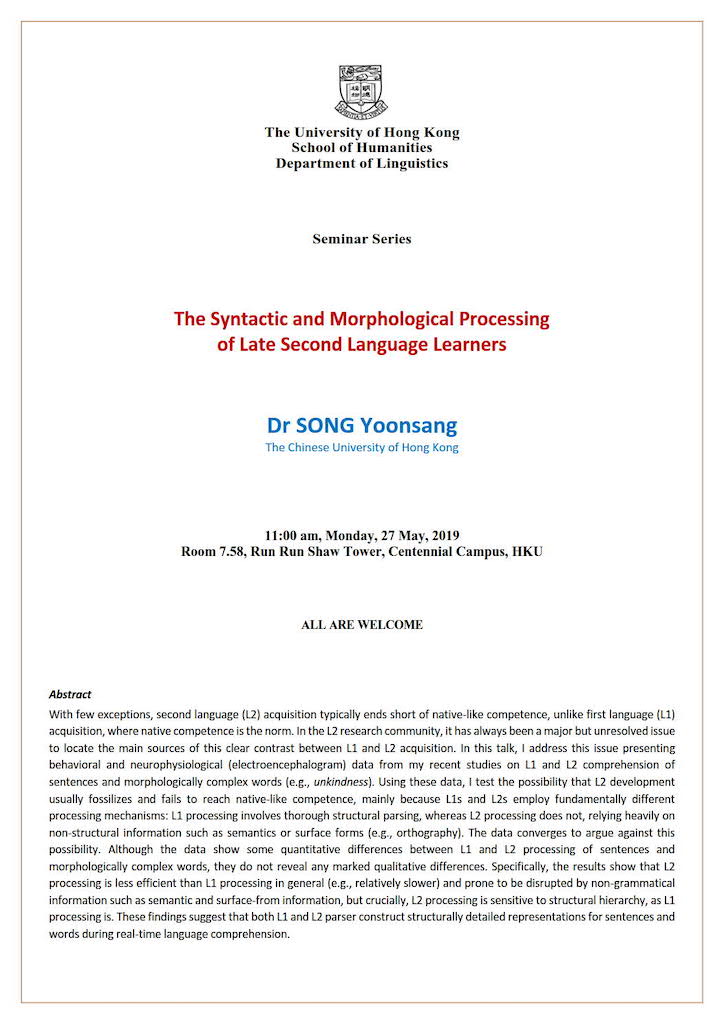

The Syntactic and Morphological Processing of Late Second Language Learners – Yoonsang SONG, The Chinese University of Hong Kong
May 27, 2019 @ 11:00 am - 1:00 pm
With few exceptions, second language (L2) acquisition typically ends short of native-like competence, unlike first language (L1) acquisition, where native competence is the norm. In the L2 research community, it has always been a major but unresolved issue to locate the main sources of this clear contrast between L1 and L2 acquisition. In this talk, I address this issue presenting behavioral and neurophysiological (electroencephalogram) data from my recent studies on L1 and L2 comprehension of sentences and morphologically complex words (e.g., unkindness). Using these data, I test the possibility that L2 development usually fossilizes and fails to reach native-like competence, mainly because L1s and L2s employ fundamentally different processing mechanisms: L1 processing involves thorough structural parsing, whereas L2 processing does not, relying heavily on non-structural information such as semantics or surface forms (e.g., orthography). The data converges to argue against this possibility. Although the data show some quantitative differences between L1 and L2 processing of sentences and morphologically complex words, they do not reveal any marked qualitative differences. Specifically, the results show that L2 processing is less efficient than L1 processing in general (e.g., relatively slower) and prone to be disrupted by non-grammatical information such as semantic and surface-from information, but crucially, L2 processing is sensitive to structural hierarchy, as L1 processing is. These findings suggest that both L1 and L2 parser construct structurally detailed representations for sentences and words during real-time language comprehension.
